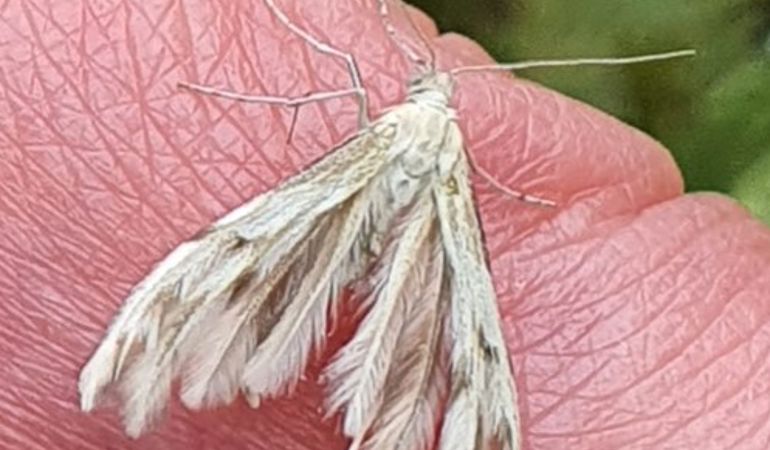Rare species recorded by Creuddyn invertebrates-focused project

A rare moth has been found in abundance in its only known Welsh habitat.
Specialist surveys for the Horehound Plume, as part of the Cryptic Creatures of the Creuddyn project, found 1,109 caterpillars – also known as larvae - on the Great Orme in Llandudno.
The micro-moth is only found in Wales on the Creuddyn peninsula – the Llandudno, Rhos-on-Sea, Deganwy, Penrhyn Bay and Llandudno Junction areas – with most past records coming from the Great and Little Orme.
It was formerly present in Glamorgan but hasn’t been recorded there for more than 100 years.
The project is a partnership between Conwy County Borough Council, Natural Resources Wales (NRW) and Butterfly Conservation, a non-profit environmentalist organisation.
It is funded by the Welsh Government and National Lottery Heritage Fund’s Nature Network Fund to strengthen the environmental resilience of Wales’ protected land.
The project aims to better understand and protect the rare and at-risk species of the Creuddyn peninsula by informing habitat management on the Great Orme, Bryn Euryn, Nant y Gamar and hopefully other sites in the area.
Siôn Dafis, project manager for Cryptic Creatures of the Creuddyn, said:
“Horehound Plume is a very striking micro-moth which only measures about 2cm between the tip of each wing.
“Its larvae eat White Horehound, a herb in the mint family which is widespread on the Great Orme – but before carrying out the survey we weren’t sure how widely distributed the moth was on the site.
“During the first round of surveys a staggering 1,109 Horehound Plume larvae were found. Combined with the fully grown moths already present, staff who carried out the survey have probably seen more of these beautiful, feather-like moths than anyone else in the UK.
“This project will provide an interesting picture of invertebrate life in the area and we want to involve the local community in making their own discoveries and raise awareness of the need to conserve habitats.”
The Great Orme is designated both as a Site of Special Scientific Interest and a Special Area of Conservation.
It features wildlife-rich limestone grasslands home to numerous rare and iconic species and has attracted countless generations of people from the Stone Age right up to the present day.
Charlotte Williams, NRW’s Conwy Environment Team Leader, said:
“This project has already given us some really positive findings and useful insights into how these rare insect species use the habitats on the Great Orme which will help us manage them moving forward.
“The scale and rate of biodiversity loss is accelerating, impacting on species who depend upon our natural resources. Partnership working like this helps us aid nature’s recovery for everyone’s benefit.”
Cllr Goronwy Edwards, Conwy’s Cabinet Member for Environment, Roads and Facilities – Infrastructure, said:
“We’re delighted that this project has already identified an abundance of Horehound Plume moths and we’re excited to find out more about the invertebrates which call the Great Orme home.
“We’ll be using all the information to help us manage habitat at all of the protected sites on the Creuddyn Peninsula.”
Six surveys have been carried out as part of the project so far, including one looking at the population of a tiny and very rare weevil Helianthemapion aciculare - it was discovered for the first time in the UK in 1992 on the Great Orme, and the 2024 survey suggests this is still its only UK home.
